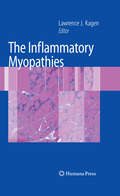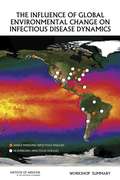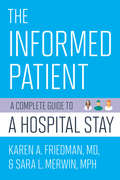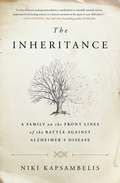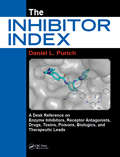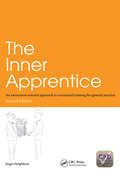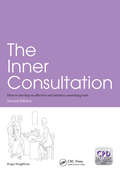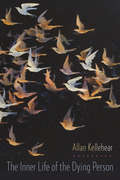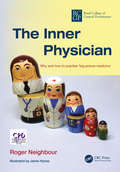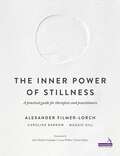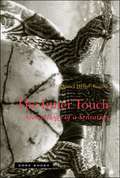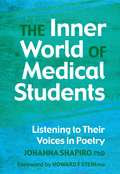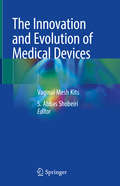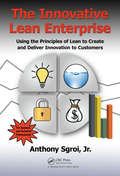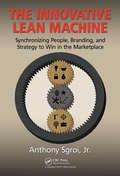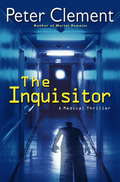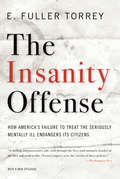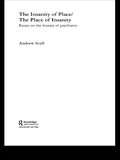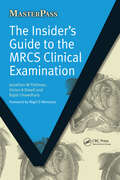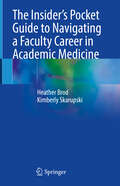- Table View
- List View
The Inflammatory Myopathies
by Lawrence J. KagenThis book presents a comprehensive review of the inflammatory myopathies, including dermatomyositis, polymyositis, and inclusion body myositis. Representing the most up-to-date knowledge on this family of diseases, The Inflammatory Myopathies covers clinical presentation, methods of diagnosis, ongoing assessment of clinical course, treatment, and the latest information on pathogenesis. Physical, laboratory, imaging, and serological findings are discussed in the context of chronic disease, complications, and co-morbidities. The role and mechanism of inflammatory response is also explored with reference to emerging humoral and cellular targets for therapeutic intervention. The Inflammatory Myopathies is the gold-standard in the field and a must have resource for rheumatologists, neurologists and all healthcare professionals who treat afflicted patients.
The Influence of Chemistry on New Foods and Traditional Products
by Arpan Bhagat Giorgia Caruso Salvatore Parisi Giampiero Barbieri Caterina Barone Zachary Ryan ConleyThis Brief concerns the influence of chemistry in the modern food and beverages industry. The world of traditional foods has been soundlessly but increasingly interconnected with the chemical industry in the last century. Different areas are considered in a multidisciplinary approach: - the production of chemical additives and of non-food components needed in the food industry (e. g. packaging materials) - the regulatory perspective of the whole food production chain - commercialization of food commodities - the problem of food safety from the viewpoint of official auditors with medical or veterinarian competencies - new and emerging risks related to food packaging materials - the assessment of the authenticity of edible products. This Brief includes different viewpoints, ranging from the management of allergens and food additives in the food plant to the complex matter of the formulation of traditional products with the consequent production of "alternative" versions of the same food.
The Influence of Global Environmental Change on Infectious Disease Dynamics: Workshop Summary
by Eileen R. ChoffnesThe twentieth century witnessed an era of unprecedented, large-scale, anthropogenic changes to the natural environment. Understanding how environmental factors directly and indirectly affect the emergence and spread of infectious disease has assumed global importance for life on this planet. While the causal links between environmental change and disease emergence are complex, progress in understanding these links, as well as how their impacts may vary across space and time, will require transdisciplinary, transnational, collaborative research. This research may draw upon the expertise, tools, and approaches from a variety of disciplines. Such research may inform improvements in global readiness and capacity for surveillance, detection, and response to emerging microbial threats to plant, animal, and human health. "The Influence of Global Environmental Change on Infectious Disease Dynamics" is the summary of a workshop hosted by the Institute of Medicine Forum on Microbial Threats in September 2013 to explore the scientific and policy implications of the impacts of global environmental change on infectious disease emergence, establishment, and spread. This report examines the observed and potential influence of environmental factors, acting both individually and in synergy, on infectious disease dynamics. The report considers a range of approaches to improve global readiness and capacity for surveillance, detection, and response to emerging microbial threats to plant, animal, and human health in the face of ongoing global environmental change.
The Influenza Pandemic of 1918–1919: A Brief History With Documents
by Susan K. KentThe influenza pandemic of 1918-19 appeared suddenly at the end of the First World War and with explosive impact took the lives of at least 30 million people worldwide. Spreading rapidly across the globe, it defied all previous understandings of the disease, striking the youngest and healthiest individuals most acutely and confounding the doctors and governments who struggled to contain it. In this volume, Susan Kingsley Kent presents an overview of the disease, detailing its symptoms, tracking its spread, and offering insights into the medical community's understanding of and reaction to the pandemic. <P><P> Documents from period newspapers, medical journals, and government publications, as well as letters, journal entries, memoirs, and novels written by survivors and medical staff, provide a variety of perspectives from six continents and illuminate the impact of the pandemic — from the lives of children orphaned by the flu to colonial rebellions for which the pandemic served as a major catalyst. Document headnotes, maps and illustrations, a chronology, questions for consideration, a selected bibliography, and an index enrich students' understanding.
The Informed Patient: A Complete Guide to a Hospital Stay (The Culture and Politics of Health Care Work)
by Karen A. Friedman Sara L. MerwinEven the most capable individuals are challenged when confronted with the complexity of the modern hospital experience. The Informed Patient is a guide and a workbook, divided into topical, focused sections with step-by-step instructions, insights, and tips to illustrate what patients and their families can expect during a hospital stay. Anyone who will experience a hospital stay—or friends or family who may be in charge of a patient’s care—will find all the help and advice they could need in the detailed sections that cover every aspect of what they can expect.Karen A. Friedman, MD, and Sara L. Merwin, MPH, offer hands-on advice about how patients, health care providers, and medical staff can work together to achieve good outcomes. Through anecdotes, tips, sidebars, and clinical scenario vignettes, The Informed Patient presents ways to enhance and optimize a hospital stay, from practical advice on obtaining the best care to dealing with the emotional experience of being in the hospital.
The Inheritance: A Family on the Front Lines of the Battle Against Alzheimer's Disease
by Niki KapsambelisAn inspiring race against time: The courageous, hopeful story of the one family who may hold the key to finding a cure for Alzheimer’s disease.Every sixty-nine seconds, someone is diagnosed with Alzheimer’s disease. Of the top ten killers, it is the only disease for which there is no cure or treatment. For most people, there is nothing that they can do to fight back. But one family is doing all they can. The DeMoe family has the most devastating form of the disease that there is: early onset Alzheimer’s, an inherited genetic mutation that causes the disease in 100 percent of cases, and has a 50 percent chance of being passed onto the next generation. Of the six DeMoe children whose father had it, five have inherited the gene; the sixth, Karla, has inherited responsibility for all of them. But rather than give up in the face of such news, the DeMoes have agreed to spend their precious, abbreviated years as part of a worldwide study that could utterly change the landscape of Alzheimer’s research and offers the brightest hope for future treatments—and possibly a cure. Drawing from several years of in-depth research with this charming and upbeat family, journalist Niki Kapsambelis tells the story of Alzheimer’s through the humanizing lens of these ordinary people made extraordinary by both their terrible circumstances and their bravery. Their tale is intertwined with the dramatic narrative history of the disease, the cutting-edge research that brings us ever closer to a possible cure, and the accounts of the extraordinary doctors spearheading these groundbreaking studies. From the oil fields of North Dakota to the jungles of Colombia, this incredible narrative redefines courage in the face of one of the most pervasive and mysterious pandemics of our time.
The Inhibitor Index: A Desk Reference on Enzyme Inhibitors, Receptor Antagonists, Drugs, Toxins, Poisons, Biologics, and Therapeutic Leads
by Daniel PurichMetabolic inhibitors and receptor antagonists are indispensable tools for the molecular life scientist. By blocking specific enzymes or receptor-mediated signal transduction cascades, they simplify the analysis of complex cellular processes especially when it is essential to demonstrate that a process of interest is functionally linked to a particular enzyme or receptor. From antibiotics to statins, modern medicine relies on the reliability and ease-of-use of enzyme- and receptor-directed inhibitors and antagonists.The Inhibitor Index is a comprehensive, curated compendium of over 7,800 enzyme inhibitors and receptor antagonists, including many toxins, poisons, and metabolic uncouplers.
The Inner Apprentice: An Awareness-Centred Approach to Vocational Training for General Practice, Second Edition
by Roger NeighbourHighly Commended in the 2005 BMA Medical Book Competition The first edition of The Inner Apprentice proved to be a landmark publication. Now in its second edition, it includes an additional chapter in which questions the assumptions about the relevance of awareness-based teaching in the overcrowded curriculum of contemporary vocational training – and suggests that the curiosity they engender is more important than ever. This book offers many new ideas, techniques and educational tools, and will be of interest to general practice trainers and trainees, and anyone involved in an individual teaching relationship.
The Inner Consultation: How to Develop an Effective and Intuitive Consulting Style, Second Edition (Radcliffe Ser.)
by Roger NeighbourThe Inner Consultation, Second Edition sets out the author’s thoughts on how consulting skills, and methods of teaching them, have evolved in the 17 years since the book’s first publication. It also develops the theme of ‘curiosity’ as the key requirement for patient-centred consulting and provides a practical consultation model with five checkpoints to work to, advice for developing skills, and suggestions for doctors to ensure they know the cues in the consultation that require their full attention. All general practitioners, GP registrars, and medical professionals will find this book essential and thought-provoking reading.
The Inner Life of the Dying Person
by Allan KellehearThis unique book recounts the experience of facing one's death solely from the dying person's point of view rather than from the perspective of caregivers, survivors, or rescuers. Such unmediated access challenges assumptions about the emotional and spiritual dimensions of dying, showing readers that -- along with suffering, loss, anger, sadness, and fear -- we can also feel courage, love, hope, reminiscence, transcendence, transformation, and even happiness as we die.A work that is at once psychological, sociological, and philosophical, this book brings together testimonies of those dying from terminal illness, old age, sudden injury or trauma, acts of war, and the consequences of natural disasters and terrorism. It also includes statements from individuals who are on death row, in death camps, or planning suicide. Each form of dying addressed highlights an important set of emotions and narratives that often eclipses stereotypical renderings of dying and reflects the numerous contexts in which this journey can occur outside of hospitals, nursing homes, and hospices. Chapters focus on common emotional themes linked to dying, expanding and challenging them through first-person accounts and analyses of relevant academic and clinical literature in psycho-oncology, palliative care, gerontology, military history, anthropology, sociology, cultural and religious studies, poetry, and fiction. The result is an all-encompassing investigation into an experience that will eventually include us all and is more surprising and profound than anyone can imagine.
The Inner Life of the Dying Person
by Allan KellehearThis unique book recounts the experience of facing one's death solely from the dying person's point of view rather than from the perspective of caregivers, survivors, or rescuers. Such unmediated access challenges assumptions about the emotional and spiritual dimensions of dying, showing readers that -- along with suffering, loss, anger, sadness, and fear -- we can also feel courage, love, hope, reminiscence, transcendence, transformation, and even happiness as we die.A work that is at once psychological, sociological, and philosophical, this book brings together testimonies of those dying from terminal illness, old age, sudden injury or trauma, acts of war, and the consequences of natural disasters and terrorism. It also includes statements from individuals who are on death row, in death camps, or planning suicide. Each form of dying addressed highlights an important set of emotions and narratives that often eclipses stereotypical renderings of dying and reflects the numerous contexts in which this journey can occur outside of hospitals, nursing homes, and hospices. Chapters focus on common emotional themes linked to dying, expanding and challenging them through first-person accounts and analyses of relevant academic and clinical literature in psycho-oncology, palliative care, gerontology, military history, anthropology, sociology, cultural and religious studies, poetry, and fiction. The result is an all-encompassing investigation into an experience that will eventually include us all and is more surprising and profound than anyone can imagine.
The Inner Physician: Why And How To Practise Big Picture Medicine
by Roger NeighbourIn this final volume of his best-selling 'Inner' trilogy, Roger Neighbour explores the relationship between a doctor's professional and private selves. He suggests that the mind of every doctor retains an untrained 'ordinary human being' part - their Inner Physician - which makes an important, though often neglected, contribution to medical practice. This 'Inner Physician', which he also describes as the 'amateur within' or the 'expert minus the expertise', plays a major role in diagnosis and treatment, and is the chief source of insight, empathy and clinical acumen. Roger shows that skilled use of the Inner Physician is one thing that distinguishes the generalist from the specialist.
The Inner Power of Stillness: A practical guide for therapists and practitioners
by Alexander Filmer-Lorch Margaret Anne Gill Caroline BarrowThe Inner Power of Stillness is not just another book about therapeutic presence, mindfulness and meditation. It explores and highlights the next evolutionary step, leading us beyond the already well-researched teachings of these topics, by looking at the multidimensional scale of stillness from an entirely different point of view.The focal point is the inner development by therapists, practitioners and teachers of the mainly dormant potential of stillness and the storage capacity of stillness-stimulus and imprints in our tissue/fascia, as well as their benefits, use and application in a treatment or teaching environment.The Inner Power of Stillness endeavours to illuminate the lost value of stillness for the therapist and practitioner both as a person and as a professional. The authors anchor the possibility of this inner evolution of the power of stillness to the latest research into tissue and cell memory.They introduce the concept of a potential new modality called 'stillness-memory', and build upon this new understanding a logical and practical framework in which science and philosophy truly inform each other.This opens up access to a much larger scale of new ideas and possibilities which, providing the transformative teachings they embody are put into practice, carry the potential for practitioners to be the best person and the best professional they can be, without compromising their own overall health and wellbeing.In-depth knowledge of how to arrive at this promising new modality, as well as how to apply it in everyday work and life, is at the heart of the book. It covers topics such as working from your inner power of stillness, the insightful self and, most importantly, the practitioner's toolkit.Some thought-provoking themes that might be of great value to therapists, teachers and practitioners who intend to dedicate some of their time to working for the greater good can be found at the end of the book, where consideration is given to a universal view of compassion and the solace that stillness can bring to people who are nearing the end of their life and final departure.The book concludes with a philosophical note acknowledging the timeless nature of ancient wisdom, and the ever more important relevance and role of the philosopher in our modern world today.The Inner Power of Stillness is a comprehensive guide for people working with people. It provides practical knowledge that will revolutionise the way practitioners help others:Working from a greater perspective, being aware of the whole as well as the parts, and responding to the cause and not only the effect.Working from an internal place of stillness.Innovative and practical exercises and techniques to dissolve friction/struggles in sustaining a state of authentic therapeutic presence, mindfulness and meditation.Simple exercises to help clients build long-term memory of stillness as a foundation for successful mindfulness and meditation practice.Includes Forewords from John Matthew Upledger, Lauren Walker and Charles Ridley
The Inner Touch: Archaeology Of A Sensation
by Daniel Heller-RoazenThe Inner Touch presents the archaeology of a single sense: the sense of being sentient. Aristotle was perhaps the first to define this faculty when in his treatise On the Soul he identified a sensory power, irreducible to the five senses, by which animals perceive that they are perceiving: the simple "sense," as he wrote, "that we are seeing and hearing." After him, thinkers returned, time and again, to define and redefine this curious sensation. The classical Greek and Roman philosophers as well as the medieval Arabic, Hebrew, and Latin thinkers who followed them all investigated a power they called "the common sense," which one ancient author likened to "a kind of inner touch, by which we are able to grasp ourselves." Their many findings were not lost with the waning of the Middle Ages. From Montaigne and Francis Bacon to Locke, Leibniz, and Rousseau, from nineteenth-century psychiatry and neurology to Proust and Walter Benjamin, the writers and thinkers of the modern period have turned knowingly and unknowing to the terms of older traditions in exploring the perception that every sensitive being possesses of its life. The Inner Touch reconstructs and reconsiders the history of this perception. In twenty-five concise chapters that move freely among ancient, medieval, and modern cultures, Daniel Heller-Roazen investigates a set of exemplary phenomena that have played central roles in philosophical, literary, psychological, and medical accounts of the nature of animal existence. Here sensation and self-sensation, sleeping and waking, aesthetics and anesthetics, perception and apperception, animal nature and human nature, consciousness and unconsciousness, all acquire a new meaning. The Inner Touch proposes an original, elegant, and far-reaching philosophical inquiry into a problem that has never been more pressing: what it means to feel that one is alive.Winner of the Aldo and Jeanne Scaglione Prize for Comparative Literary Studies
The Inner Workings of Life
by Eberhard O. VoitLiving systems are dynamic and extremely complex and their behaviour is often hard to predict by studying their individual parts. Systems biology promises to reveal and analyse these highly connected, regulated and adaptable systems, using mathematical modelling and computational analysis. This new systems approach is already having a broad impact on biological research and has potentially far-reaching implications for our understanding of life. Written in an informal and non-technical style, this book provides an accessible introduction to systems biology. Self-contained vignettes each convey a key theme and are intended to enlighten, provoke and interest readers of different academic disciplines, but also to offer new insight to those working in the field. Using a minimum amount of jargon and no mathematics, Voit manages to convey complex ideas and give the reader a genuine sense of the excitement that systems biology brings with it, as well as the current challenges and opportunities.
The Inner World of Medical Students: Listening to Their Voices in Poetry
by Johanna ShapiroThis is a practical and comprehensive guide to communication in family medicine for doctors nurses and staff in the primary healthcare team. It brings together all facets of communication in healthcare including involvement of patients staff and external workers. It shows how to address all aspects of communication in relation to one-to-one situations teaching and groups and encourages the reader to reflect on their own clinical and work experience. Using think boxes exercises and references this is an accessible guide relevant to all members of the practice team.
The Innovation and Evolution of Medical Devices: Vaginal Mesh Kits
by S. Abbas ShobeiriThis text provides a central resource for physicians, entrepreneurs, and the MBA students about how innovation occurs in medical device industry. The book uses the rise and fall of vaginal mesh kits to highlight the evolution of responses by the physicians, patients and the regulatory bodies. There are specific chapters reviewing the US regulatory issues and business practices that were consequential to withdrawal of most vaginal mesh kits from the US market. The book is meant to be concise, evidence-based, and practical for the first time readers to understand the innovation forces. Concise textual information from acknowledged experts is complemented by high-quality diagrams and images to provide a thorough update of this rapidly evolving medical device industry. The case study chapters fully elucidate the anatomical basis that led to conceptualization of vaginal mesh kits, their introduction into the market, medicolegal and business implications followed with innovation that occurred by the surgeons to utilize ultrasound for and innovative surgeries to overcome device complications. With a luxurious number of well-marked pictures, readers will gain a clear understanding of the medical device innovation and evolution. Innovation and Evolution of Medical Devices: The vaginal Mesh Kits provides a rich practical resource written in a simple a step-by- step approach for all readers in their approach to new medical devices and technologies.
The Innovative Lean Enterprise: Using the Principles of Lean to Create and Deliver Innovation to Customers
by Jr., Anthony SgroiThis book explains how to use Lean principles to drive innovation and strategic portfolio planning. It outlines simple yet powerful visual Lean tools that can enhance idea generation and product development. It discusses customer value in the form of the benefits customers desire and walks readers through the processes of using Lean techniques to effectively evaluate the quality of any prospective marketing opportunity. Filled with examples that readers can easily relate to, it includes examples from a variety of industries including healthcare.
The Innovative Lean Machine: Synchronizing People, Branding, and Strategy to Win in the Marketplace
by Jr., Anthony SgroiIn order for an organization to thrive in a competitive business environment, its strategy, people, and branding must be fully optimized. The Innovative Lean Machine: Synchronizing People, Branding, and Strategy to Win in the Marketplace explains how to use Lean principles and visual tools to maximize these core components in any business.The book
The Inquisitor
by Peter ClementIt's spring in Buffalo, New York. At sprawling St. Paul's Hospital, new interns rush through the halls, staff doctors scramble to catch their protégés' mistakes, and everyone is aware of one unrelenting threat: A new and vicious strain of severe acute respiratory syndrome (SARS) has hit America hard and is menacing the hospital like a wolf at the door. Wrapped in spacesuit-like garb to search for every possible source of infection, the hospital staff desperately tries to protect the lives of patients-and of each other. Yet despite St. Paul's best efforts, people are dying. In this chilling medical landscape, no one notices the slight spike in the death rate in a palliative care ward. The prevailing attitude is "They're supposed to die. That's why we call them terminal. " When these same patients complain of terrifying near-death experiences, the hospital staff attributes it to delirium caused by medication. But when ER chief Dr. Earl Garnet gets blamed for the unexpected death of a patient, he defies protocol and opens an independent investigation. He quickly becomes suspicious that something far more sinister than disease is killing the hospital's most vulnerable patients. For Garnet, looking into the deaths means rattling relationships that have been built over years-relationships with several men and women he once trusted but now must doubt. With the SARS epidemic spinning out of control and a storm of suspicion, fear, and mistrust raging through the corridors of St. Paul's, the hospital is rocked by a horrifying crime: A respected researcher is found brutally murdered. And his executioner may be ready to strike again. With brilliant pacing, scalpel-sharp suspense, and an unmatched knowledge of the workings of a big-city hospital, Peter Clement is a thriller writer in a league of his own. In his new work, he takes us on a galvanizing, frightening, and constantly fascinating journey set on the front lines of medicine-where some dangers can be prevented and others can only be feared. From the Hardcover edition.
The Insanity Offense: How America's Failure to Treat the Seriously Mentally Ill Endangers Its Citizens
by E. Fuller Torrey"Vital for all working in the mental health field . . . . Fascinating reading for anyone." --Choice E. Fuller Torrey, the author of the definitive guides to schizophrenia and manic depression, chronicles a disastrous swing in the balance of civil rights that has resulted in numerous violent episodes and left a vulnerable population of mentally ill people homeless and victimized. Interweaving in-depth accounts of landmark cases in California, Wisconsin, and North Carolina with a history of legislation and changes in the mental health care system, Torrey gives shape to the magnitude of our failure and outlines what needs to be done to reverse this ongoing--and accelerating--disaster. A new epilogue on the 2011 shooting in Tucson, Arizona, brings this tragic story up to date.
The Insanity of Place / The Place of Insanity: Essays on the History of Psychiatry (Routledge Studies in Cultural History)
by Andrew ScullThis compelling book brings together many of the major papers published by Andrew Scull in the history of psychiatry over the past decade and a half. Examining some of the major substantive debates in the field from the eighteenth century to the present, the historiographic essays provide a critical perspective on such major figures as Michel Foucault, Roy Porter and Edward Shorter. Chapters on psychiatric therapeutics and on the shifting social responses to madness over a period of almost three centuries add to a comprehensive assessment of Anglo-American confrontations with madness in this period, and make the book invaluable for those concerned to understand the psychiatric enterprise. The Insanity of Place/The Place of Insanity will be of interest to students and professionals of the history of medicine and of psychiatry, as well as sociologists concerned with deviance and social control, the sociology of mental illness and the sociology of the professions.
The Insider's Guide to the MRCS Clinical Examination (Masterpass Ser.)
by Rajat Chowdhury Vivian Elwell Jonathan Fishman'The MRCS Clinical Examination is the final requirement to obtain the professional qualification for the Intercollegiate Membership of the Royal College of Surgeons. This Membership allows the transition from doctor to surgeon and a career in higher surgical training. This standardised clinical examination requires candidates to demonstrate their ability in examining patients, with effective and clear communication. 'The authors should be commended on producing a book that covers all clinical sections of the Examination, in such a concise, comprehensive and structured manner.This study guide will serve as your personal tutor working closely with you, prompting and providing pointers to improve your examination technique. It includes dozens of clinical scenarios, demonstrating how to examine the system and avoid common mistakes. In addition, the candidates can improve their communication skills, which is an integral part of this Examination. This book complements the "Insider Medical MRCS Clinical Course". It simulates the actual test conditions by providing sample cases and answers, coupling identification of weaknesses and strengths. This book will also prove to be extremely valuable for the new-style MRCS OSCE' - Nigel Mendoza in his Foreword.
The Insider’s Pocket Guide to Navigating a Faculty Career in Academic Medicine
by Heather Brod Kimberly SkarupskiThe purpose of this indispensable and concise title is to provide a roadmap to a fulfilling and successful career in academic medicine. A comprehensive guide tailored to the unique needs and experiences of faculty members, this engaging and easy-to-read book addresses the most commonly encountered topics in the field, bridging the knowing-doing gap and offering practical strategies and insights for sustainable success and promotion. Developed by two highly accomplished academic career development coaches, the work will be of great interest to a wide range of audiences. From new hires fresh out of fellowship to post-docs to mid- or late-career academics looking to transition, The Insider’s Pocket Guide to Navigating a Career in Academic Medicine covers all stages of professional development and features real-life stories from colleagues across education, research, and healthcare. Delve into a systematic overview of academic medicine, explore personal development through vision and mission statements, and master the art of job searches and negotiations. Learn the importance of onboarding, networking, and mentorship while developing organizational savvy. Confront common challenges, enhance well-being with diversity and inclusion, and achieve work-life integration. Further, this invaluable career resource includes supplemental worksheets and links from the author’s website to ensure you have all the tools you need to build a thriving career. A unique, significant contribution to the career literature in academic medicine, this handy guide is the ultimate companion for navigating career transitions and growth opportunities, setting you on the path to a rewarding and aligned career in academic medicine.
The Insightful Body: Healing with SomaCentric Dialoguing
by Julie MckaySomaCentric Dialoguing offers therapists simple yet effective techniques for improving communication with their clients, and for helping clients understand and articulate the messages of their body. In this accessible introduction to the approach, Julie McKay outlines the core techniques and describes how they can be applied to make therapeutic sessions more effective. Explaining that individuals communicate and process information in different ways she describes how therapists can identify each client's unique language blend, and how they can use this knowledge to encourage them to become more in tune with, and more able to express, their body's needs. Guidance is provided on how to ask more effective questions in sessions, what words to use, and what words to avoid, for optimal results. Using carefully chosen words and phrases therapists can empower clients to express themselves freely. Using the simple, yet profound, techniques outlined in this book therapist of all kinds will learn how to look beyond the head and into the body to help clients heal more completely and more deeply. This wonderful resource will provide bodyworkers, acupuncturists, occupational therapists, psychotherapists, movement instructors and a wide range of other healing arts practitioners with the skills they need to refine their dialoguing vocabulary and deliver rich and rewarding sessions.
